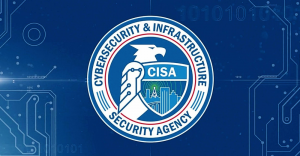Introduction
In today’s digital landscape, cloud technology is at the forefront of business operations. As organizations migrate to the cloud, ensuring the security of their data and applications becomes paramount. In this article, we will delve deep into mastering the art of cloud security assessment, equipping you with the knowledge and strategies needed to protect your valuable assets.
The Fundamentals of Cloud Security Assessment
Understanding the Cloud Environment
Cloud security assessment begins with a solid understanding of the cloud environment. Delve into the intricacies of cloud architecture, deployment models, and service models, as each element requires specific security considerations.
Threat Landscape in the Cloud
Explore the dynamic threat landscape in the cloud. Learn about common threats, such as data breaches and DDoS attacks, and how they can impact your cloud infrastructure.
Security Controls and Best Practices
Discover security controls and best practices that are essential for safeguarding your cloud resources. These include encryption, multi-factor authentication, and security groups.
Assessing Your Cloud Security
Conducting Vulnerability Assessments
Learn the art of conducting vulnerability assessments to identify weaknesses in your cloud infrastructure. Utilize advanced scanning tools and methodologies to uncover potential risks.
Penetration Testing
Dive into penetration testing, a proactive approach to evaluate your cloud security. Uncover vulnerabilities through controlled attacks and address them before malicious actors can exploit them.
Compliance and Regulatory Considerations
Explore the compliance landscape relevant to your industry. Understand how regulatory requirements impact your cloud security assessment and how to stay in compliance.
Securing Cloud Applications
Secure Development Lifecycle
Master the secure development lifecycle for cloud applications. Incorporate security from the very beginning to create robust and resilient software.
Application Security Testing
Learn how to perform application security testing to identify and rectify vulnerabilities in your cloud-based applications.
Cloud Security Monitoring and Incident Response
Real-time Monitoring
Understand the importance of real-time monitoring to detect and respond to security incidents swiftly. Explore tools and techniques for continuous surveillance.
Incident Response Plan
Develop a well-defined incident response plan that outlines steps to take in the event of a security breach. Be prepared to act decisively when needed.
Frequently Asked Questions
How often should I assess my cloud security?
Regular assessments are crucial. Quarterly or after major changes is a good practice.
What are some common cloud security threats?
Common threats include data breaches, insider threats, and misconfigured security settings.
Can I use third-party tools for cloud security assessment?
Yes, many third-party tools and services can enhance your cloud security assessment process.
Is compliance the same as security in the cloud?
No, compliance is about meeting specific regulations, while security is about safeguarding your data and assets.
What is the role of the cloud service provider in security assessment?
Cloud service providers offer security features, but it’s your responsibility to assess and enhance security.
How can I keep my cloud security assessment up-to-date?
Stay informed about new threats and security trends, and regularly update your assessment strategies.
Conclusion
Mastering the art of cloud security assessment is an ongoing process that demands a combination of knowledge, strategy, and vigilance. By understanding the fundamentals, conducting assessments, and staying prepared for incidents, you can ensure the security of your cloud infrastructure.



